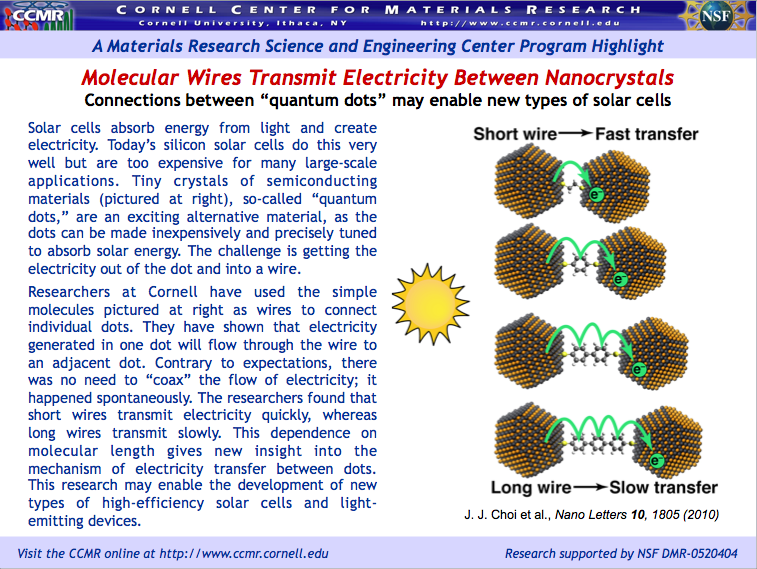
Solar cells absorb energy from light and create electricity. Today’s silicon solar
cells do this very well but are too expensive for many large-scale
applications. Tiny crystals of semiconducting materials (pictured at right),
so-called “quantum dots,” are an exciting alternative material, as the dots can
be made inexpensively and precisely tuned to absorb solar energy. The challenge
is getting the electricity out of the dot and into a wire.
Researchers at Cornell have used the simple molecules pictured at right as wires to connect
individual dots. They have shown that electricity generated in one dot will
flow through the wire to an adjacent dot. Contrary to expectations, there was
no need to “coax” the flow of electricity; it happened spontaneously. The
researchers found that short wires transmit electricity quickly, whereas long
wires transmit slowly. This dependence on molecular length gives new insight
into the mechanism of electricity transfer between dots. This research may
enable the development of new types of high-efficiency solar cells and
light-emitting devices.